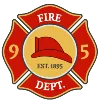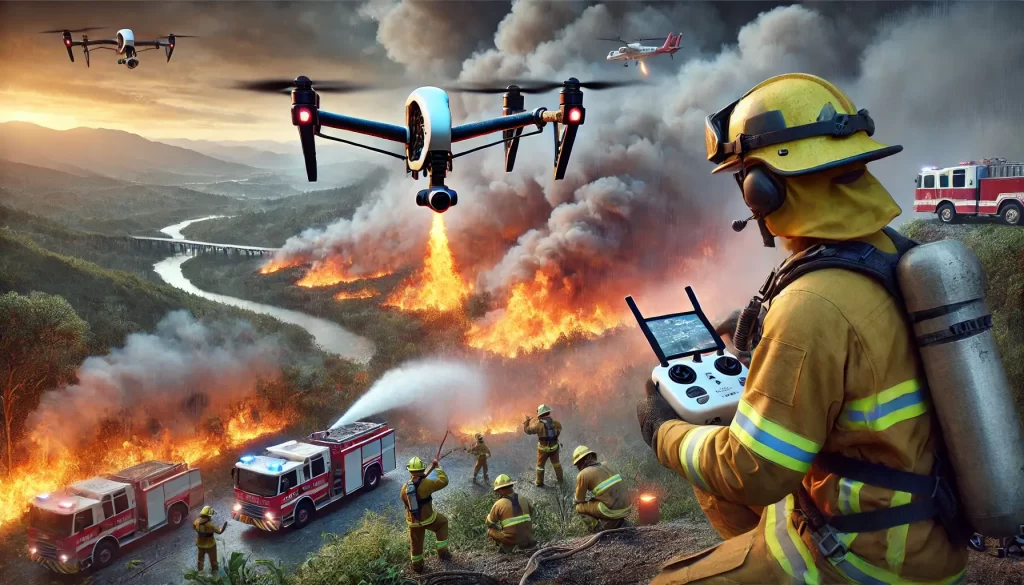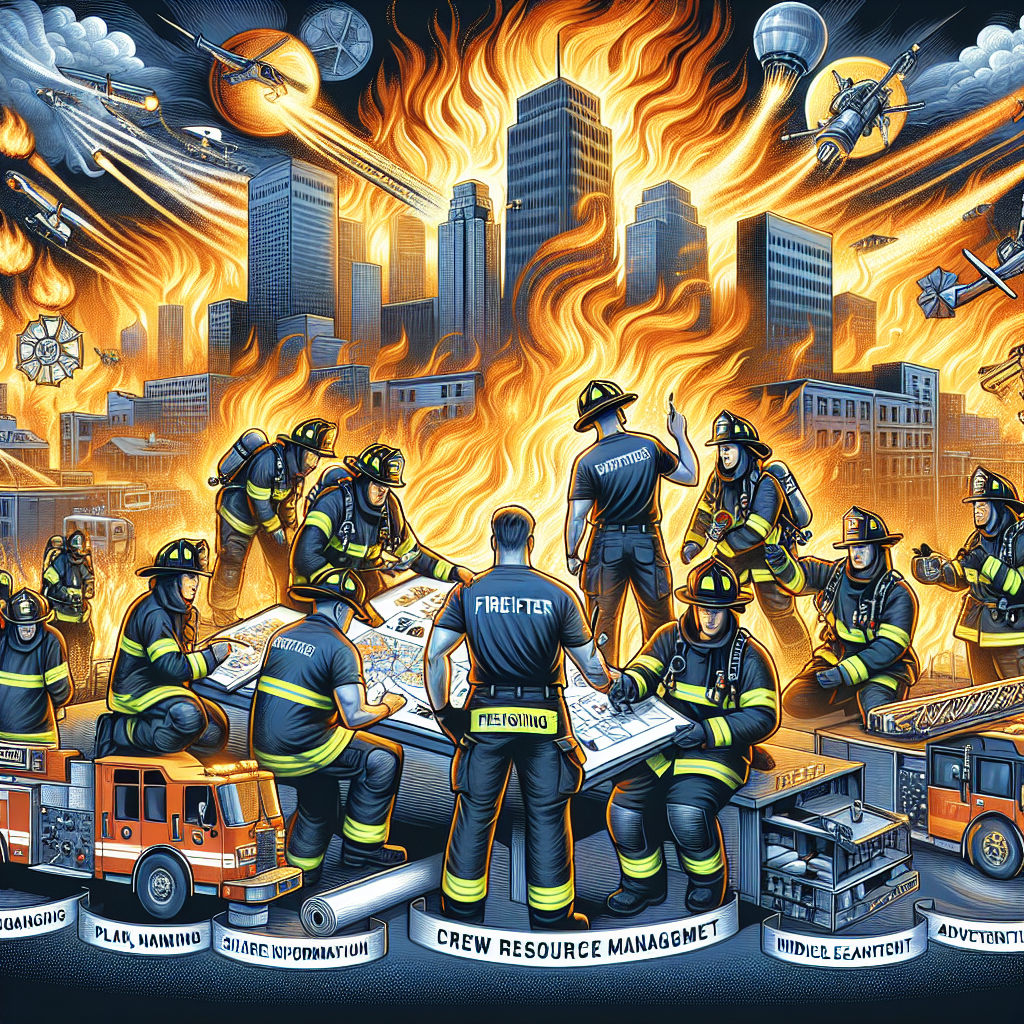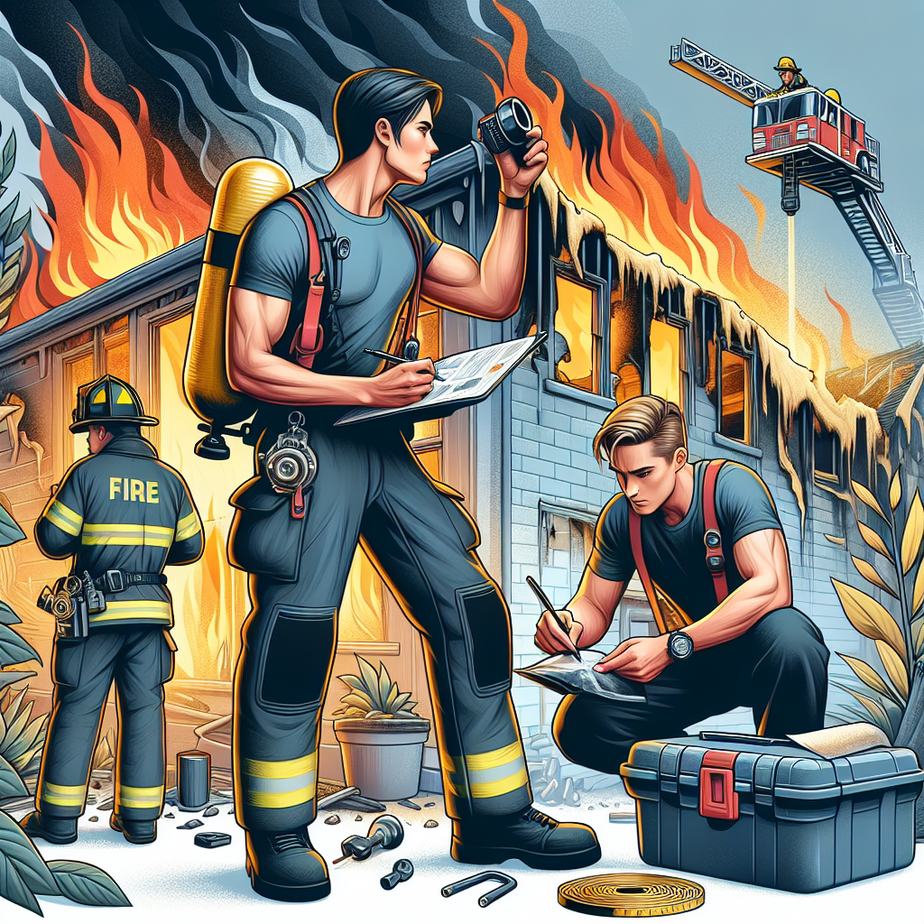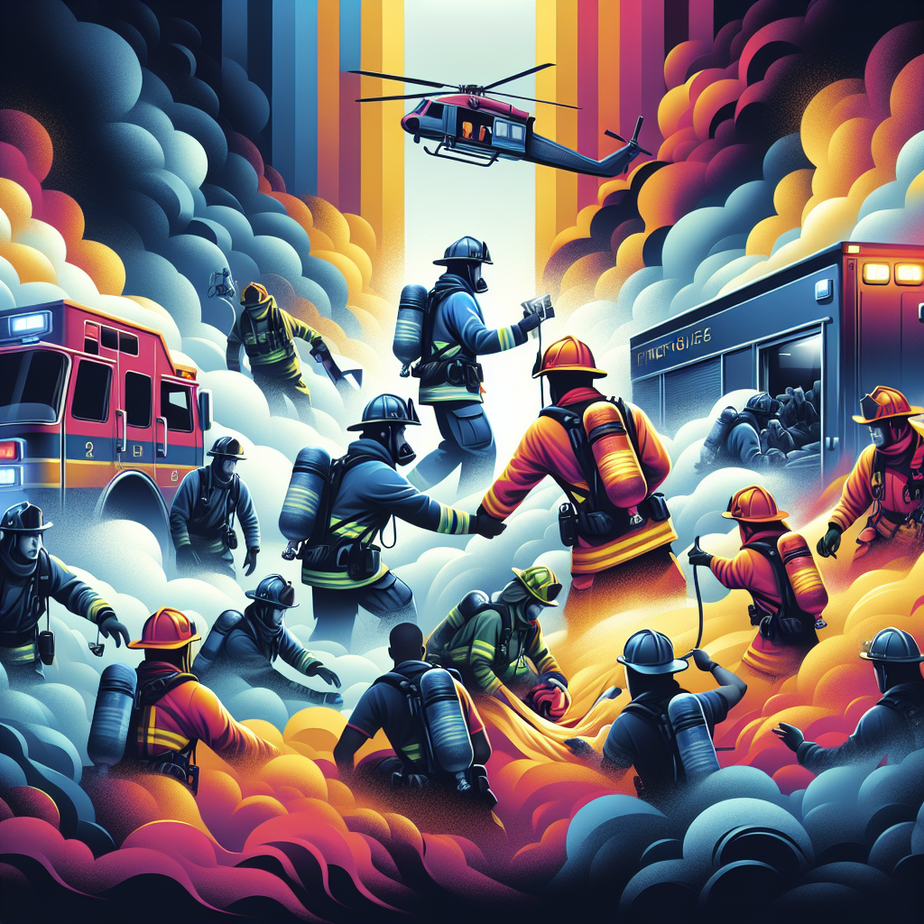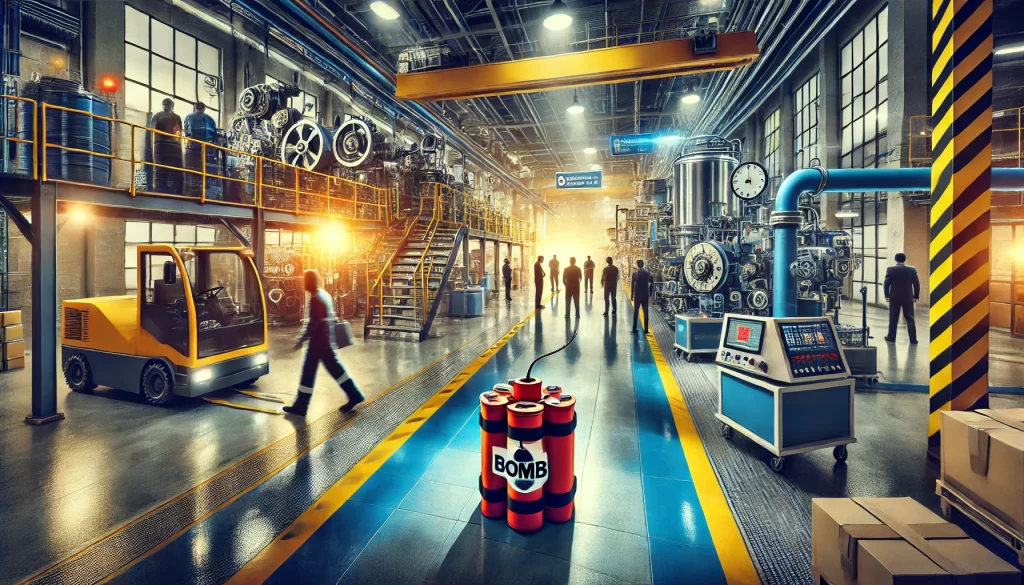Now Reading: How Drones Are Revolutionizing Firefighting: Current Uses, Future Potential, and Key Benefits
-
01
How Drones Are Revolutionizing Firefighting: Current Uses, Future Potential, and Key Benefits
How Drones Are Revolutionizing Firefighting: Current Uses, Future Potential, and Key Benefits
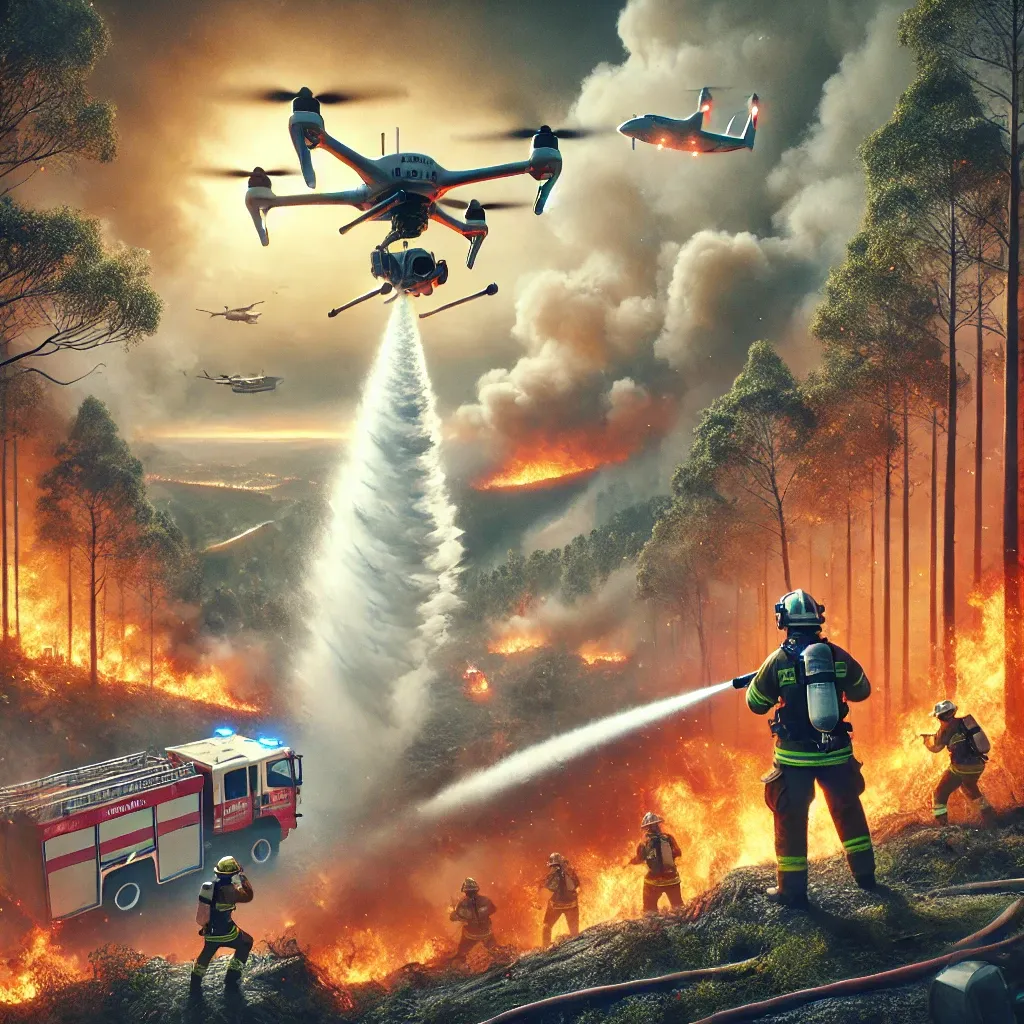
In the ever-evolving world of firefighting, technological advancements are transforming the way emergency services respond to crises. Among the most impactful innovations is the use of drones, or Unmanned Aerial Vehicles (UAVs), in fire monitoring and management. These versatile tools are revolutionizing the field, offering a bird’s-eye view of the most dangerous and hard-to-access areas, enabling quicker decision-making, and ultimately saving lives and property.
Firefighting has always been a profession rooted in bravery and innovation. From traditional tools like fire hoses and ladders to modern fire-resistant clothing and specialized firefighting vehicles, technology has played a vital role in enhancing the safety and effectiveness of firefighting efforts. However, as climate change intensifies fire seasons and wildfires grow more severe, the demand for smarter, faster, and more efficient solutions has reached a critical level. This is where drones step in.
What Makes Drones a Game-Changer?
Drones equipped with state-of-the-art features like high-definition cameras, thermal imaging sensors, and GPS technology provide firefighters with real-time data about fire behavior. Unlike ground-based teams or manned aircraft, drones can swiftly navigate through hazardous environments, offering detailed aerial perspectives that are otherwise impossible to achieve. This capability is especially crucial when monitoring wildfires across vast, inaccessible terrains.
In addition to monitoring active fires, drones also play a critical role in post-fire assessments. They can identify lingering hotspots that may reignite, survey the extent of the damage, and assist in recovery planning. This versatility makes them invaluable not only during emergencies but also in preparation and aftermath stages.
The Importance of Public Awareness
As communities become more vulnerable to wildfires and structural fires, understanding how technologies like drones are deployed is essential for public confidence and safety. Transparency in their use not only builds trust but also opens the door to exploring their broader potential.
This blog post will delve into the transformative impact of drones in fire monitoring and management. We’ll explore their current applications, the possibilities for future innovation, and a balanced perspective on their advantages and limitations. By the end of this discussion, you’ll have a clearer picture of how these high-tech tools are shaping the future of firefighting and what it means for community safety.
Frequently Asked Questions
We understand that navigating the world of firefighting and technology can sometimes be overwhelming. Here’s a list of frequently asked questions to guide you through how drones are transforming fire services.
01.
What are the primary uses of drones in firefighting today?
Drones are used for real-time fire monitoring, helping firefighters assess active fire zones safely and efficiently. They monitor containment lines, detect hidden hotspots, and assist in mapping fire-affected areas for recovery planning. By providing aerial views and critical data in real-time, drones help firefighters deploy resources effectively and minimize risks to human life. Their versatility extends to pre-fire risk assessments and post-fire evaluations, making them indispensable tools in modern firefighting operations.
02.
How do drones help improve firefighter safety?
Drones improve firefighter safety by reducing the need for ground teams to enter dangerous zones. They provide an aerial perspective of fire behavior, structural damage, and environmental hazards, enabling teams to make informed decisions without direct exposure to risks. Additionally, drones can identify hotspots, unstable structures, or hazardous materials from a distance, allowing firefighters to focus on safe, strategic interventions. This approach minimizes accidents while improving operational efficiency.
03.
What technologies are integrated into drones for firefighting?
Firefighting drones integrate cutting-edge technologies such as thermal imaging cameras for detecting heat sources, high-resolution cameras for detailed imagery, and GPS for precise navigation. Advanced drones also feature AI-powered analytics to predict fire behavior and communication relay systems for maintaining connectivity in remote areas. These innovations enable drones to provide accurate, actionable data that enhances the decision-making process and complements traditional firefighting strategies.
04.
Can drones be used in urban fire scenarios?
Yes, drones are highly effective in urban fire scenarios. They provide detailed aerial views of fire-damaged buildings, help identify structural weaknesses, and locate safe entry and exit points for rescue teams. Drones can also deliver real-time data to assist in evacuations, monitor the spread of fires in densely populated areas, and even deploy fire suppression tools in hard-to-reach spaces, significantly enhancing urban firefighting operations.
05.
How are drones used for wildfire management?
Drones play a vital role in wildfire management by monitoring fire spread, assessing containment lines, and detecting potential breaches. They can survey vast areas quickly, collecting data on fire intensity, terrain, and wind patterns. This information allows firefighting teams to allocate resources efficiently, prioritize evacuations, and implement containment strategies that limit the fire's impact. Their speed and precision make them invaluable during wildfire emergencies.
06.
What role do drones play in post-fire assessments?
Drones assist significantly in post-fire assessments by surveying affected areas, mapping burn scars, and evaluating structural and environmental damage. They identify hazards like weakened trees, unstable buildings, and residual hotspots. This data is crucial for planning recovery efforts, rebuilding infrastructure, and implementing reforestation projects. Drones also provide valuable information for insurance claims and help develop strategies to prevent future fires, making them integral to recovery and mitigation efforts.
07.
What is the future potential of drones in firefighting?
The future potential of drones in firefighting is vast. Autonomous drones could provide continuous fire monitoring and mapping, while AI-driven systems may predict fire behavior to inform proactive measures. Drones may also deliver critical supplies to isolated teams, act as communication relays in disconnected areas, and collaborate as part of swarm technology to manage large-scale fires. These advancements promise to revolutionize fire prevention, response, and recovery strategies.
08.
What are the advantages of using drones in firefighting?
Drones offer numerous advantages, including cost efficiency, reduced risk to firefighters, and real-time data collection. They provide access to hazardous or inaccessible areas, enhance situational awareness, and improve resource allocation during emergencies. Their ability to perform multiple tasks simultaneously—such as monitoring fires and identifying hotspots—makes them invaluable tools for modern firefighting.
09.
What challenges are associated with drone use in firefighting?
Challenges include limited battery life, vulnerability to extreme weather conditions, and regulatory restrictions on drone use. Additionally, drones require skilled operators, and integrating them into traditional firefighting protocols can be complex. Privacy concerns and data security issues also need to be addressed to ensure public trust and successful adoption of this technology.
10.
How do drones integrate with other firefighting technologies?
Drones integrate seamlessly with tools like Geographic Information Systems (GIS) and AI-powered predictive modeling. They collect real-time data that enhances fire behavior forecasting, enabling teams to plan more effective strategies. Drones also serve as communication relays in remote areas, ensuring seamless coordination during emergencies, and complement other equipment, such as fire suppression vehicles.
11.
Are drones environmentally friendly in firefighting operations?
Yes, drones are more environmentally friendly than traditional aerial firefighting methods. They produce fewer emissions than manned aircraft and reduce the need for ground vehicles in monitoring and suppression efforts. Additionally, their precision minimizes collateral damage to ecosystems, making them a sustainable choice for firefighting operations.
12.
How do communities benefit from drone use in firefighting?
Communities benefit from faster response times, improved firefighter safety, and more effective firefighting strategies. Drones help prevent small fires from escalating, reducing damage to property and ecosystems. They also aid in recovery efforts by providing detailed assessments of affected areas. These advancements build public confidence in emergency services and contribute to safer, more resilient communities.
Real-Time Fire Activity Monitoring: Aerial Perspectives at Work
One of the most transformative applications of drones in firefighting is their ability to provide real-time monitoring of fire activity. Unlike ground teams or even manned aircraft, drones can quickly reach active fire zones and offer unparalleled aerial perspectives. Equipped with high-definition cameras and thermal imaging sensors, drones deliver critical data to command centers, allowing firefighters to understand the fire’s behavior as it unfolds.
For instance, during a wildfire, drones can capture live footage of flames, smoke patterns, and nearby vegetation. By overlaying thermal imagery onto the live video feed, firefighters can identify areas of intense heat, pinpoint the leading edges of the fire, and predict its likely path based on terrain and wind conditions. This capability not only improves response times but also enhances decision-making, enabling commanders to allocate resources more effectively.
Assessing Containment Lines: Ensuring Effectiveness in Real-Time
Containment lines are essential in controlling and suppressing wildfires. Traditionally, firefighters would patrol these lines on foot or rely on helicopter flyovers to ensure their integrity. Drones, however, have revolutionized this process. Their agility and ability to hover at low altitudes make them ideal for detailed inspections of containment efforts.
Using thermal imaging technology, drones can detect breaches in containment lines, such as areas where the fire may have crossed or areas at risk of being compromised. This allows firefighters to address these vulnerabilities immediately. Moreover, drones can fly over steep or heavily forested areas where ground access is challenging, ensuring comprehensive coverage of containment lines.
Identifying Hotspots: Preventing Rekindling After Containment
Hotspots—residual areas of heat left after a fire is extinguished—pose a significant risk of reignition. Drones equipped with thermal cameras can quickly identify these hidden dangers, even under layers of ash or debris. By flying over large areas in a short period, drones allow firefighters to locate and address hotspots before they reignite into full-blown fires.
This capability is especially crucial in the aftermath of wildfires, where sprawling landscapes may contain hundreds of potential hotspots. Using drones to survey these areas not only saves time but also reduces the physical strain on firefighters who would otherwise need to manually inspect them.
Post-Fire Assessments: Data for Recovery and Planning
After a fire has been successfully contained, drones continue to play a vital role in the recovery process. Their ability to capture high-resolution images and videos enables detailed assessments of the affected areas. Drones can map out burn scars, document the extent of damage to infrastructure, and provide data on the environmental impact of the fire.
This information is invaluable for recovery teams, environmental scientists, and insurance assessors. For example, fire services can use drone-generated maps to plan reforestation projects, rebuild damaged infrastructure, and prioritize areas that require immediate attention. Additionally, the data collected by drones helps local governments and communities develop long-term fire prevention strategies.
Enhancing Training and Preparedness: A Virtual Advantage
Training is an integral part of firefighting, and drones are enhancing this aspect of fire services as well. During simulated emergency drills, drones capture detailed footage of the exercises, allowing teams to analyze their performance and identify areas for improvement. By reviewing drone footage, firefighters can gain a better understanding of how their strategies play out in real-life scenarios.
Furthermore, drones can simulate real-time fire behavior by using computer-generated overlays, enabling firefighters to practice responses without the risks associated with live fires. This approach not only improves preparedness but also builds confidence among team members.
Collaboration with Other Technologies: The Power of Integration
The true power of drones lies in their integration with other firefighting technologies. For example:
Geographic Information Systems (GIS): Drones can capture topographical data and integrate it with GIS software to produce detailed maps of fire-prone areas. These maps help in identifying high-risk zones and planning resource deployment.
AI and Machine Learning: When paired with AI, drones can analyze fire behavior and predict its spread. This predictive capability helps commanders make proactive decisions.
Communication Relays: In remote or disaster-affected areas where communication networks are down, drones equipped with communication relays can maintain connectivity, ensuring seamless coordination among teams.
Sensor Integration: Drones can be equipped with air quality sensors to measure levels of harmful particulates and gases in the atmosphere, helping authorities make decisions about evacuations or public health warnings.
Supporting Urban and Rural Firefighting
Drones are versatile tools that cater to both urban and rural firefighting needs. In urban areas, drones assist in assessing structural fires by providing comprehensive views of buildings, identifying weak points, and guiding rescue teams. In rural settings, drones are invaluable for monitoring vast tracts of land, detecting small fires before they spread, and coordinating large-scale firefighting efforts.
A Growing Trend in Australian Fire Services
In Australia, where the fire season is becoming longer and more intense due to climate change, the adoption of drones has been particularly significant. From bushfire monitoring to structural fire assessments, Australian fire services are leveraging drones to overcome challenges posed by the country’s unique landscapes and extreme weather conditions. Their ability to reduce risks to human life while improving efficiency makes them an indispensable part of the modern firefighting toolkit.
The Next Frontier: Autonomous Drones for Fire Management
The future of drone technology in firefighting lies in automation. Autonomous drones, capable of operating without direct human control, are set to revolutionize fire management. These drones could be programmed to perform continuous fire surveillance, mapping, and analysis, even in the most remote and hazardous areas. Equipped with AI-driven algorithms, they could analyze fire behavior in real-time, predict its spread, and relay this information to command centers.
Autonomous drones may also play a role in proactive fire prevention. For example, they could patrol high-risk areas during fire seasons, using sensors to detect early signs of ignition, such as smoke or sudden temperature spikes. By identifying and addressing potential fires before they grow, these drones could significantly reduce the scale and impact of wildfires.
Delivering Critical Supplies to Isolated Areas
Another exciting potential use for drones in firefighting is their ability to deliver essential supplies to remote or inaccessible locations. During large-scale wildfires, ground teams often operate in rugged terrains where logistics become a challenge. Drones could be used to transport items like water, medical kits, and communication devices directly to firefighting crews or affected communities.
For instance, lightweight drones with high payload capacities could carry emergency supplies to isolated areas cut off by fire. This capability would be especially beneficial in situations where traditional transportation methods, such as helicopters or vehicles, are too slow or dangerous.
Acting as Communication Relays
In emergency situations, communication is critical. Fires, particularly in remote regions, often disrupt traditional communication networks, leaving firefighting teams disconnected. In the future, drones equipped with communication relay systems could provide a solution. By creating temporary networks, these drones would ensure seamless communication between ground teams, command centers, and other emergency responders.
Additionally, drones could transmit live video feeds and data collected from the field to remote command centers, enabling better coordination and more informed decision-making. This technology could also be invaluable during multi-agency operations, ensuring all teams stay connected and aligned in their efforts.
Enhancing Situational Awareness Through Swarm Technology
Swarm technology—where multiple drones operate as a coordinated group—has the potential to transform firefighting strategies. A swarm of drones could cover vast areas simultaneously, providing comprehensive data on fire spread, wind patterns, and terrain. By working together, these drones could create a detailed and dynamic map of the fire in real-time, giving commanders a complete picture of the situation.
Swarm technology could also be used for specific tasks, such as creating firebreaks. For example, drones equipped with fire-retardant materials could work in unison to establish barriers that slow down or halt the spread of a fire.
Integration with Advanced Analytics and Predictive Modeling
As drone technology advances, its integration with predictive modeling systems will become more prominent. By combining data collected by drones with historical fire data and weather forecasts, AI-powered systems could create highly accurate models of fire behavior. These models would enable firefighters to anticipate how a fire will evolve, identify vulnerable areas, and implement measures to mitigate its impact.
For instance, predictive modeling could help fire services pre-position resources in high-risk areas, reducing response times and minimizing damage. This proactive approach would represent a significant shift from the traditional reactive methods of firefighting.
Supporting Urban Firefighting and Disaster Response
In urban environments, future drones could assist with a range of tasks beyond fire monitoring. For example, drones could inspect high-rise buildings for structural integrity during and after fires, guide rescue teams to trapped individuals, and even deploy small fire suppression tools in hard-to-reach places.
During large-scale disasters, such as industrial fires or explosions, drones could be deployed to assess chemical or biological hazards, ensuring the safety of both firefighters and the public. Their ability to provide real-time data in complex scenarios would make them an invaluable asset in urban disaster response.
Overcoming Current Challenges with Future Innovations
While drones offer immense potential, they are not without limitations. Issues like limited battery life, susceptibility to harsh weather, and regulatory hurdles currently pose challenges to their widespread adoption. However, ongoing advancements in technology are addressing these concerns. For example:
Extended Battery Life: Future drones may be powered by more efficient batteries or renewable energy sources, allowing them to operate for longer durations.
Weather Resistance: Improved materials and designs could make drones more resilient to extreme conditions, such as high winds or heavy smoke.
Regulatory Frameworks: As the use of drones becomes more common, governments are likely to establish clearer regulations that balance safety, privacy, and operational efficiency.
The Vision of Fully Integrated Fire Management Systems
The ultimate goal for the use of drones in firefighting is their integration into a comprehensive fire management system. This system would combine drones, AI, GIS, and other technologies to create a seamless network of tools that work together to prevent, monitor, and combat fires. Such a system would enhance the efficiency, safety, and effectiveness of firefighting efforts, ultimately saving lives and protecting communities.
The Transformative Power of Drones in Firefighting
The integration of drone technology into fire monitoring and management marks a significant leap forward for firefighting services worldwide. By leveraging advanced features such as thermal imaging, real-time data transmission, and autonomous capabilities, drones are revolutionizing how fires are detected, monitored, and managed. As we’ve explored, their applications are vast, ranging from real-time fire activity monitoring to post-fire assessments, and their potential for future innovations is even more promising.
Drones are not just tools; they represent a new era of efficiency, safety, and adaptability in firefighting. They complement human efforts by taking on the most hazardous tasks, providing critical data that enhances decision-making, and enabling more strategic resource allocation. As fire seasons grow longer and more intense due to climate change, these technological advancements are not merely advantageous—they are essential.
The Benefits of Drone Integration
The advantages of drones in firefighting are undeniable. They are cost-effective, reducing the need for expensive manned aircraft while offering similar capabilities. Their ability to access hard-to-reach areas, such as dense forests or steep terrains, makes them invaluable for monitoring wildfires and inspecting containment lines. Moreover, drones significantly reduce risks to human lives by performing tasks that would otherwise put firefighters in danger.
The versatility of drones is another major benefit. Beyond fire suppression, they assist in disaster response, post-fire recovery, and even training exercises. Their integration with other technologies, such as AI and GIS, further enhances their utility, enabling predictive modeling and comprehensive situational awareness.
Challenges to Overcome
While drones hold immense potential, their adoption is not without challenges. Limited flight durations, susceptibility to harsh weather, and regulatory restrictions are among the hurdles that need to be addressed. Additionally, concerns about data security and privacy must be carefully managed to ensure public trust.
However, these challenges are not insurmountable. Ongoing advancements in battery technology, materials science, and regulatory frameworks are paving the way for more robust and reliable drone systems. As these improvements take shape, the barriers to widespread drone adoption will diminish, unlocking their full potential.
The Future of Firefighting: A Collaborative Vision
The future of firefighting lies in the integration of cutting-edge technologies, and drones are at the forefront of this evolution. As autonomous systems become more sophisticated, drones will play an increasingly proactive role in fire prevention and management. Their ability to perform continuous surveillance, predict fire behavior, and deliver critical supplies will make them indispensable in combating both urban and rural fires.
Collaboration between technology developers, fire services, and government agencies will be key to realizing this vision. By working together, these stakeholders can create innovative solutions that address the challenges of modern firefighting while ensuring the safety and well-being of communities.
Empowering Communities Through Awareness
Public awareness and support are critical for the successful implementation of drone technology in firefighting. By educating communities about how drones are used and their benefits, fire services can build trust and foster acceptance. Transparency about data use and adherence to privacy regulations will further strengthen public confidence in these technologies.
Moreover, involving communities in fire prevention efforts—such as using drone-collected data to inform evacuation plans or fireproofing strategies—can enhance overall preparedness. When citizens understand and support these initiatives, the effectiveness of firefighting efforts is amplified.
A Commitment to Innovation and Safety
As a senior firefighter, my message to the public is one of assurance and optimism. Fire services are committed to embracing innovation while maintaining the highest standards of safety and accountability. The integration of drones into our operations reflects this commitment, as we continue to explore new ways to protect lives, property, and the environment.
Drones are not a replacement for the courage and dedication of our firefighters—they are a powerful tool that amplifies their efforts. Together, technology and human expertise form a formidable force against the growing threat of fires.
Closing Thoughts and Invitation for Dialogue
The journey toward a future where drones are fully integrated into firefighting is ongoing, and community input plays a vital role. I invite you to share your questions, concerns, or ideas about the use of drones in fire management. Your feedback will help us refine our strategies and ensure that these advancements benefit everyone.
As we look ahead, one thing is clear: the adoption of drone technology is not just about responding to fires—it’s about building a safer, more resilient future for all. Through collaboration, innovation, and a shared commitment to safety, we can rise to the challenges of a changing world and protect our communities like never before.

